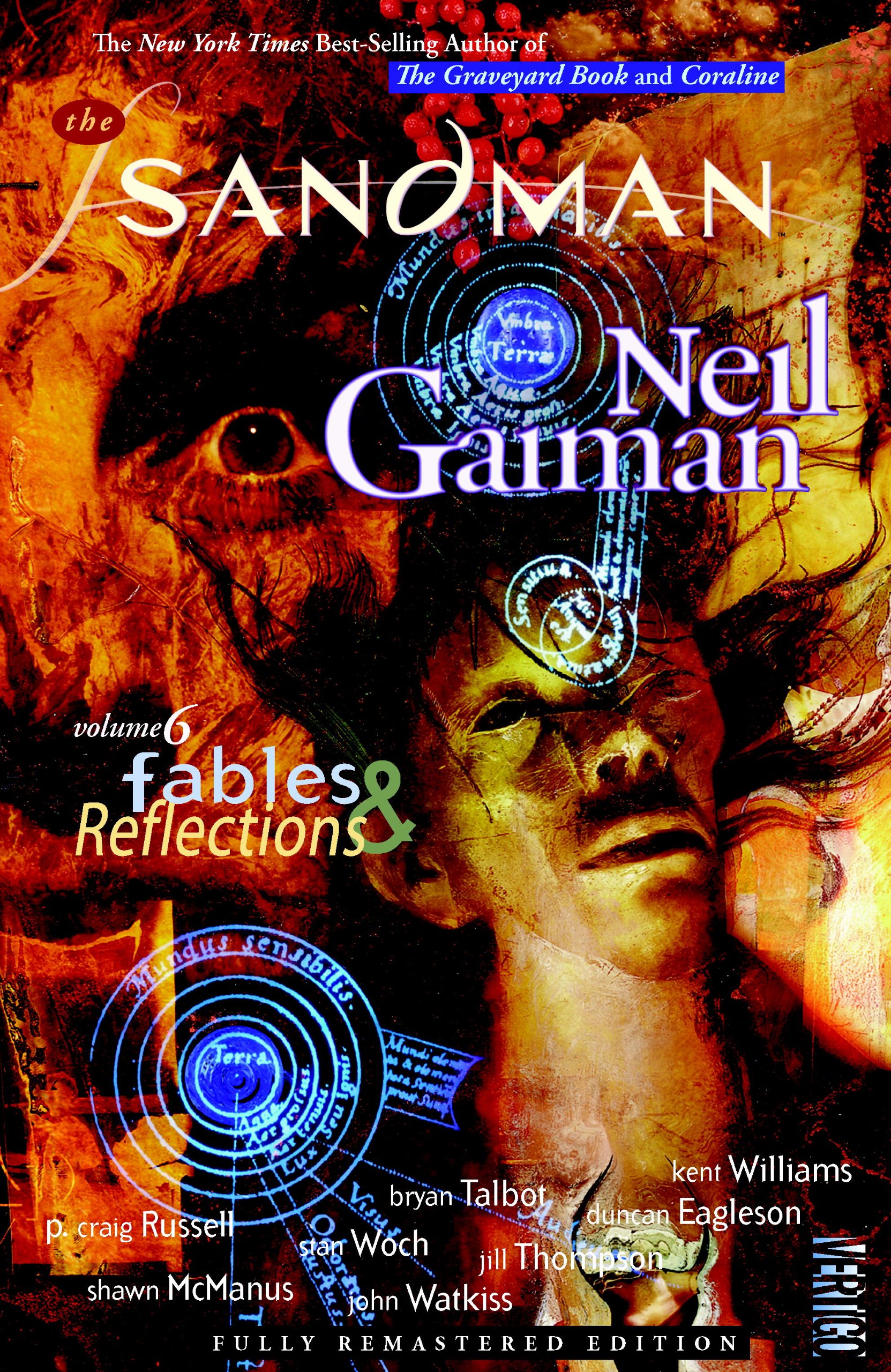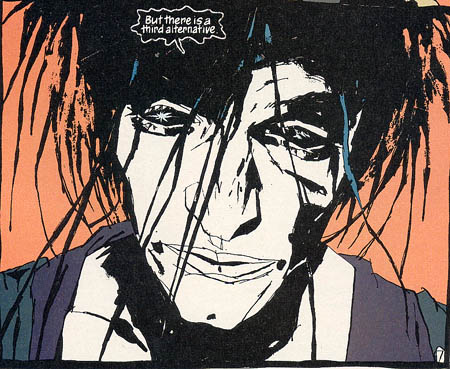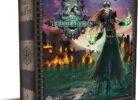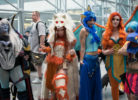Eight years ago, Stephen Segal, then creative director at the legendary Weird Tales magazine, asked if he could use some modest writings I had been doing on Neil Gaiman’s Sandman for a 20th anniversary retrospective he was putting together. Naturally, I said yes. Sadly, the series was lost in a website revamp. Not wanting it to disappear into the ether, I’m now presenting it on my site in 11 parts (alas, without the benefit of Stephen’s editing; these are pre-publication versions). Hope you enjoy.
Recurring Dream: An Anniversary Re-reading of Neil Gaiman’s Sandman
Part 7 of 11, Fables & Reflections
Originally published on the Weird Tales website, January 2009
 The second of Sandman’s three short story collections, Fables and Reflections, is arguably the most eclectic of the bunch. It may not be the most instantly accessible (that one is Dream Country), or the most focused (World’s End), but it’s probably the most essential of the bunch.
The second of Sandman’s three short story collections, Fables and Reflections, is arguably the most eclectic of the bunch. It may not be the most instantly accessible (that one is Dream Country), or the most focused (World’s End), but it’s probably the most essential of the bunch.
Like Season of Mists, the nature of having responsibility, whether it be over people, things, or cultures, is a prominent theme here, a theme deeply interwoven with the consequences of the choices those with power make. Rulers grapple with sustaining a culture’s golden age. A troubled man takes responsibility for the fractured remnants of his life and finds solace in insanity. Emperors are pained by the decisions they make.
And ultimately, many of these people must face the consequences of their choices, a theme utterly essential to Sandman as a whole. This is best displayed in the story “Orpheus,” an unusual short story in that it is vital to the series-spanning story arc.
“Orpheus” transforms the Greek myth into a Sandman story. Here, Orpheus is Dream’s son, and his tragic mistake – when trying to lead his deceased love out of the Underworld, he looks upon her before it is permitted, thus losing her forever – is underscored by the involvement of the Endless. In seeking to again be with his love, Orpheus is given eternal life, yet this is a curse, not a blessing. When he is torn to shreds by vile creatures seeking revenge upon him for a slight, his head remains very much alive.
Most tragic of all is Dream’s treatment of his son. As ever, Dream is distant and cold, seemingly incapable of real love or compassion. (His own brother comments on his lack of empathy and emotion in Brief Lives.) Disappointed in the choices his son made and suffering from a hurt pride, Dream chooses to walk away from him forever. It’s not just a heartless act, it’s yet another moment during which Dream comes across like a petulant child, his wounded pride driving him to ill-chosen decisions. Ultimately, these events have a deep, deep impact on the series. Such a deep impact, this story ought to have been collected in Brief Lives instead of here.
If the most important story to the Sandman narrative here is “Orpheus,” the most impressive story in this collection is certainly “Ramadan,” which showcases a gloriously luxuriant city in the midst of its golden age. The presentation, the art, the writing, even the unusual way it was created. All come together for one of the most respected single issues of the series. “Ramadan” is interesting not just because of its poetic beauty – and it has that in spades – but also for the way in which it turns the tables on the usual dream vs. reality fable. Rather than dream become reality, reality becomes dream. Wonderful.
The best of the bunch, though, is the charming “Three Septembers and a January,” which looks at the real life Joshua Norton through the eyes of the Endless. Norton was an insane, albeit harmless, 19th Century man who thought he was the Emperor of the United States. He was a resident of San Francisco (appropriately enough) and people loved him. Here Dream, Desire and Despair have a contest of sorts over who has dominion over Norton. The story, which is equal parts cute and tragic, also manages to be an inspiring look at how we make our own reality. Happiness and contentment is something that comes from within. Our hearts, our fates, our hopes and dreams; they are in our hands. They are driven by modesty, and acceptance, and by understanding that greed, desire and consumption are not the road to inner peace.
A simple message, dare I say quaint, yet handled with warmth and humanity, and yet another example of the differing directions this series took.
 Other tales are equally all over the map. We visit werewolves in love, a young Marco Polo lost in the desert, and spend more time with Orpheus, who is being protected by an ancestor of John Constantine (of Hellblazer fame). “August,” one of my favorites in this collection, takes a look at the nature of power and responsibility through the eyes of a dwarf and Emperor Augustus of Rome.
Other tales are equally all over the map. We visit werewolves in love, a young Marco Polo lost in the desert, and spend more time with Orpheus, who is being protected by an ancestor of John Constantine (of Hellblazer fame). “August,” one of my favorites in this collection, takes a look at the nature of power and responsibility through the eyes of a dwarf and Emperor Augustus of Rome.
Like many of the one-shot tales that pepper the series, Dream and the Endless are minor players, mere apparitions that drift in and back out again. Like passing shadows or, more appropriately, dreams. They are not the focus of these tales. Rather, they provide the framework around which Gaiman explores the world inside our head. Stories that examine universal truths and ask very human questions.
Collections like this one illustrate what a shrewd decision it was to make Sandman a series that could go anywhere and be anything. Gaiman himself called it the best decision he could possibly have made, and that’s the truth. While my heart is most with the saga’s central tale, these short stories are each gems of their own, jewels in the crown that is one of comic’s greatest creative achievements.








Yes. Yes it is
Pingback: Looking back at Neil Gaiman’s Sandman – part 9 of 11, World’s End – ERIC SAN JUAN